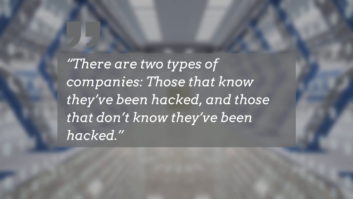
The most powerful news is local news. Just ask those in the path of a tornado.
Take the case of Reed Timmer, an extreme weather meteorologist who has honed the practice of chasing blizzards and tornadoes from his home base in Norman, Okla., a bustling Midwest city smack dab in the middle of Tornado Alley. Proof of Timmer�s sometimes-shocking close encounters with severe weather is posted on his social media site through a series of high-resolution photos and often startling close-up videos.
But finding Timmer via Twitter is a bit of a shot in the dark. What if you�re not connected with him directly � or any of the hundreds of other extreme weather chasers capturing violent thunderstorms and battering tropical cyclones � and there is a twister warning for your neighborhood?
Or what if your interest isn�t necessarily weather at all � but is instead local theater, regional sports or community politics?
While social media is proving to be one of the most precise forms of hyperlocalized connection for radio stations, the key to its success is often unreliable: linking readers with content that they actually care about.
There is the challenge. How to get readers connected to the social media content that they want to see? And how to keep them coming back to a radio station�s Website for more?
A Pew Research Center survey found last year that nearly two-thirds of American adults now use social networking sites, up from 7 percent when the center began systematically tracking social media usage in 2005. Social media has become a pervasive medium, impacting heavy-handed issues like politics, communications and health care as well as lighter fare like dating, empty-nest syndrome and local community engagement.
Plus, news consumption itself is evolving. According to the results of a 2016 poll conducted by the Reuters Institute for the Study of Journalism, half of the 50,000 Internet users surveyed said they use social media as a source of news each week, with one in 10 saying it is their main source.
So how are smart organizations responding? First, by understanding how well their station is reaching and retaining readers. And two, by considering the types of tools that can best tap into the power of social media � and then learning how to intertwine that platform back into the station�s overarching broadcast framework.
Starting that type of social media curation begins simply: by listening to what people are saying, reacting to, and sharing on social media. And then delivering safe and relevant social content on a specific topic or event right as it happens. HELP OR HURT? HOW SOCIAL MEDIA IMPROVES JOURNALISM
Consider the steps of the Beasley Broadcast Group, Inc. (BBGI), an O&O of 53 radio stations in the United States that delivers a variety of content to more than 7 million on-air listeners. Keeping these listeners connected to a station�s online site is key, especially once a listener is no longer actively listening to the radio.
Social media has proven to be an answer.
�We � know that providing them with additional, fresh content is the key to keeping them on site,� said Kimberly Sonneborn, BBGI�s vice president of Digital Product Development. Tools that aggregate localized content has allowed the news organization to collect breaking news via social media, publish it to a radio station�s Website, and provide readers a real-time feed of a breaking news story as it unfolded.
Those steps were put in place by BBGI when a major news event took place in San Bernardino, Calif., in December 2015. Using a social media curation platform, �we were delivering news of the event 20 to 30 minutes before the mainstream news sites were able to report on it,� Sonneborn said.
Whether it�s a tornado watch or breaking news event, these types of curation technologies are meeting two key goals for news organizations: allowing radio stations to develop a more engaged audience while simultaneously boosting revenue by building out Web content.
One such solution from Crowdynews has been noted for its customization options: allowing stations to manually select sources to display, such as Twitter, Instagram or an RSS feed; and fine-tune filtering, ensuring that unsuitable tweets and replies are filtered appropriately. The technology also offers a geotargeting option to pinpoint a specific location, as well as native language options.
What remains to be seen? How far these types of technologies can go in creating a localized, social-rich experience.
RESOURCES
Social Media Curation in 5 Steps eBook � An overview of the five things to prep, implement, and optimize for engaging your audience with social content from Twitter, Facebook, Instagram, Youtube and more.
Creation + Curation white paper � Leverage social media to increase reader engagement by understanding how readers use social media to locate & consume news, and the importance of blending editorial and social content.
Social Media Improves Reader�Friendliness of Your Content research brief � A recent survey of American consumers demonstrated that readers believe including social media content does, in fact, improve the reader-friendliness of articles. Learn more.
BBGI Customer Case Study � Beasely Broadcast Group (BBGI) knew when the first reports surfaced that their listeners would want the latest updates from the scene and social media curation helped them stay ahead of the traditional news reports and keep their readers informed. Download the complete story.













